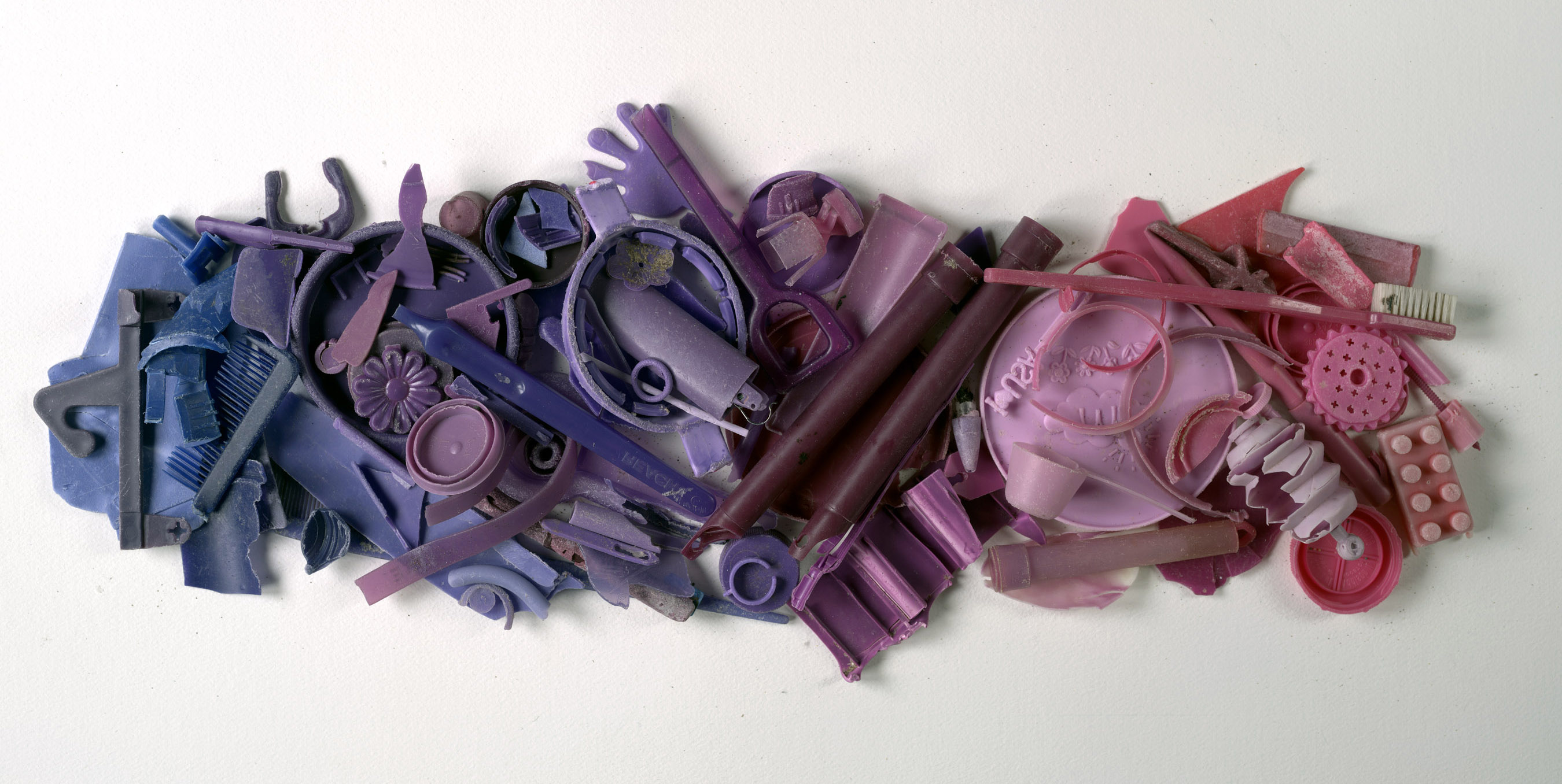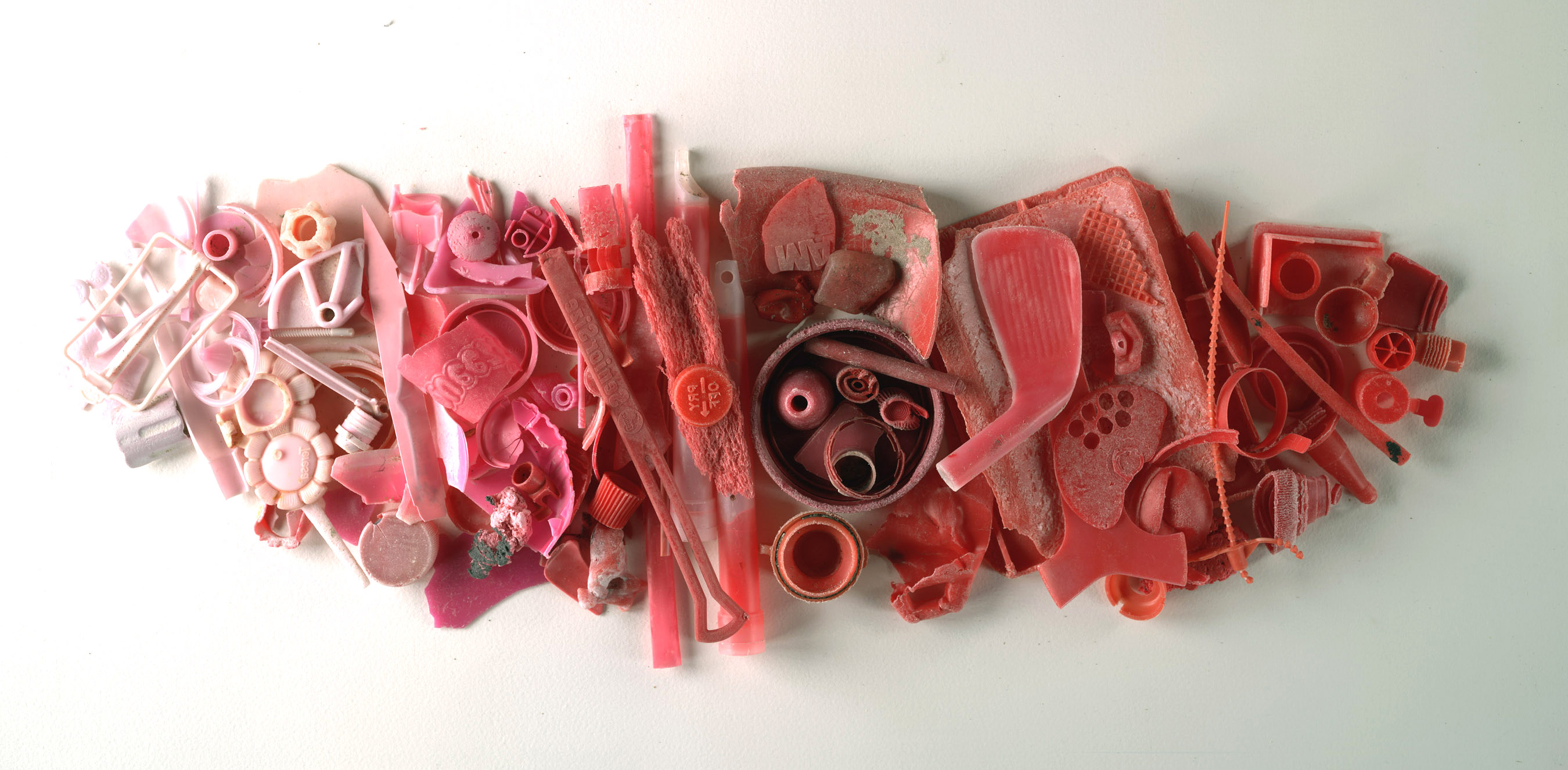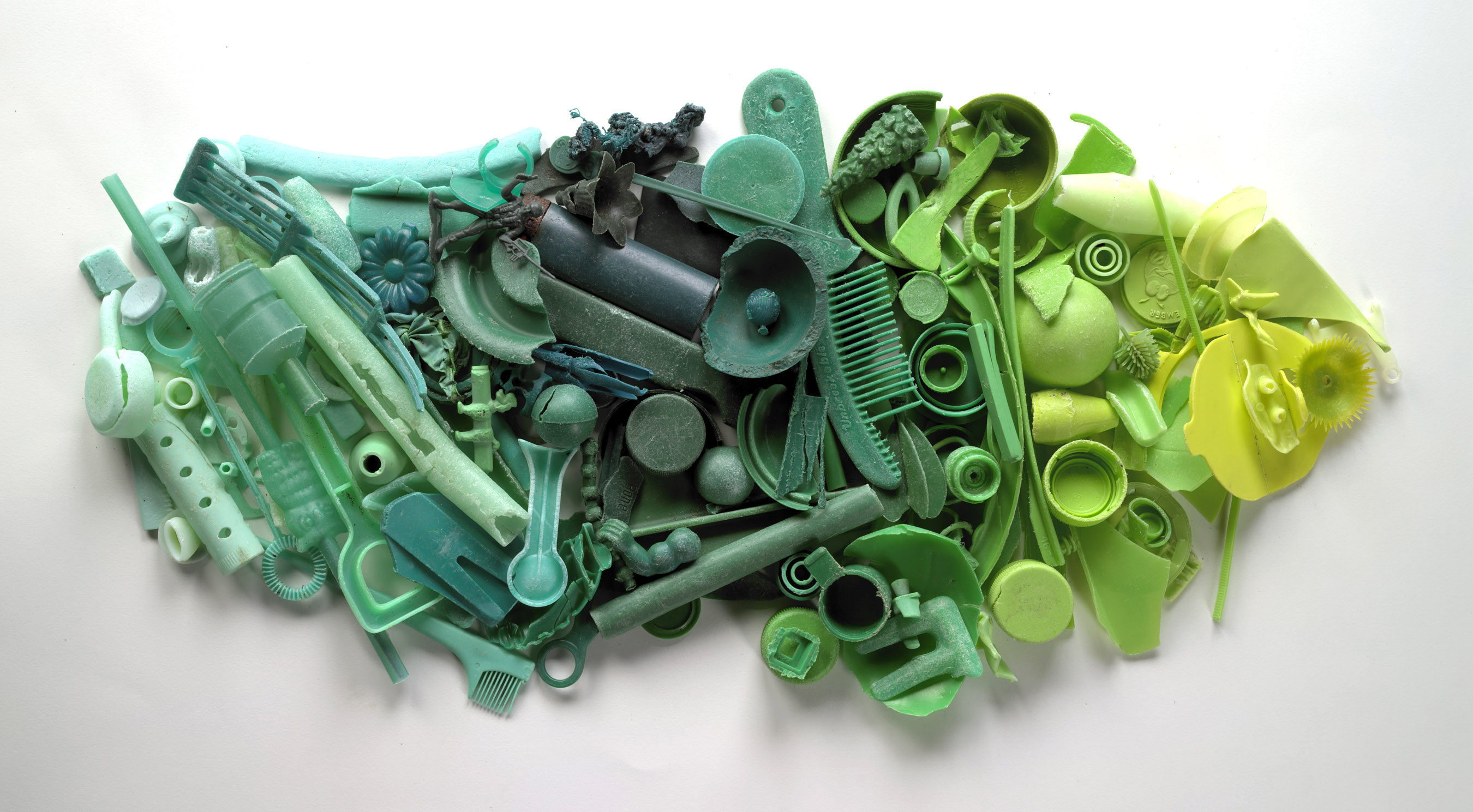Since 1999 Richard Lang and Judith Selby Lang as a collaborative team have been visiting Kehoe Beach, Point Reyes National Seashore in Northern California. They have rambled 1000 meters of tideline of this one beach hundreds of times, to gather plastic debris washing out of the Pacific Ocean and from this one beach have collected over two tons of material. By collecting and “curating” the pieces of plastic, they fashion it into works of art that matter-of-factly represent, with minimal artifice, the material as it is. The viewer is often surprised that this colorful stuff is the thermoplastic junk of our throwaway culture.
What is your background as an artist and how would you describe your style?
We came to our work after 30 years of independent studio work so we each have a story.
Richard: In 1972 I was a grad student in sculpture, and around the same time the Eco-Movement was gathering steam. I had a despairing feeling of adding more material to an already crowded world. I therefore, channeled these feelings into created the installation for my thesis that I crafted out of materials gleaned from various sources to create a room-sized assemblage. Twenty years later during a walk on Kehoe Beach, I found the sheer volume of plastic debris to be appalling. One day my son and I picked up seven large garbage bags that we intended to bring home to throw “away”, but the idea of “away” carried a charged emphasis of meaning. While sorting through this debris we found that many pieces carried a peculiar beauty in patina and subtlety of color. So began a perception and appreciation of the stuff as an art material.
Judith: As a child I aspired to be a paleontologist. Every day after school with friends I would mine the white limestone cliffs in the woods near our house. We were successful in unearthing many small fragments of crustacean and clamshells. So I would go to the Museum of Dallas to look and identify what we were digging up. I would longingly gaze into the specimen vitrines and wish upon wish that someday one of my fossils would be on display with my name displayed as the collector. Fast forward some 55 years, I now find myself to be artist/archeologist mining the beach in search for remnants of plastic, future fossils from the Plasticene.
2) From the plastic that you find on the beach, what is your process to convert them into art pieces? What challenges are you presented with by using unique materials?
We use the plastic we collect to shape arrangements that are transported to Electric Works in San Francisco where the work is photographed and printed. The plastic then goes back into our “inventory” to be used in future configurations. The photographs go out into the world for exhibition in galleries, museums and art spaces to entice and educate the public about the perils of plastic pollution.
We try not to make “something” like a fish or a bird or a portrait or a landscape. We return to our art training in the abstract notions generated by the Bauhaus Movement. Ideas of rhythm and line, shape and color come into the work—musical composition is the most relevant metaphor.
The plastic is seen only for color and form, not the things they once were. They become akin to strokes of paint coming off a palette. Often at the beach we find ourselves “shopping” for a certain color or size to fulfill out an abstract idea. We never think of making a story with our work, aside from the larger story of plastic in our lives.

3) Please discuss one of your favorite works of art? What is the story behind it? Why does it resonate so strongly with you?
40-some years ago the pedagogic pattern in most art schools, came from the Bauhaus school in Dessau, Germany. Johannes Itten, an instructor at the school, was known for his treatise on color, The Art of Color. His great question ”What color is it?’ sparked our reverie as we gleaned plastic from the beach. What green is it—olive, forest mantis or teal? What blue—baby, navy, cobalt or ultramarine? Color exists in context and is influenced by the color it is placed next to. Chromas, a series of photographs where the colors portrayed are just as we found them, is our attempt to answer the question, “What color is it?” Simple pieces of color, put together in a considered way, is the basis of how we go about our work. For us, colors are like the keys on a keyboard that when placed compositionally together become like a song.

Chroma
(Archival pigment print on Moab Entrada fine art paper)
4) What reactions would you like people to have to your work and what message do you want them to take way? What have been the most interesting reactions?
As artists, we endeavour to use the power of the art we create to ignite conversations about conservation. The images we produce invite people to take a look at how plastic has pervaded every aspect of our lives. When looking at one of our colourful images we want viewers to ponder as to whether the pull-tab, or the errant water bottle lid portrayed could have been theirs. According to a recent World Economic Forum, by 2050 the plastic contained in the oceans will outweigh its fish, pound for pound. Therefore, we want everyone to take responsibility for their actions and to recognize that their choices do make a difference.
5) What role does humor play in your work?
Funny you should ask! The notion of “Aesthetic Arrest” means to stop habitual thinking and open to possibility is necessary in the face of the daunting facts—The sanctimony and piety of political “correctness” are the twin assassins of energetic action.
We created a series of can labels we created for the Academy of Sciences that demonstrate our more humorous works.
For more information on their work, discover their website www.beachplastic.com.
